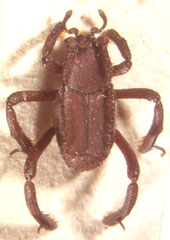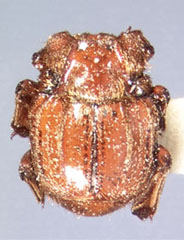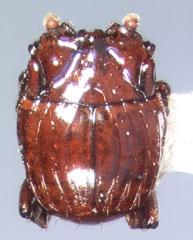Hetaeriinae
Michael S. Caterino- Alienister
- Aneuterapus
- Aristomorphus
- Attalister
- Aphanister
- Anasynodites
- Alloiodites
- Aemulister
- Bastactister
- Cachexia
- Chelonosternus
- Coelister
- Colonides
- Cyclechinus
- Chelyocephalus
- Cossyphodister
- Cheilister
- Clientister
- Convivister
- Chrysetaerius
- Daptesister
- Daitrosister
- Discoscelis
- Ecclisister
- Enicosoma
- Euxenister
- Eurysister
- Euclasea
- Eretmotus
- Ecitonister
- Fistulaster
- Glyptosister
- Gallaster
- Hetaerimorphus
- Hemicolonides
- Hetaerius
- Hetaeriobius
- Hetaeriodes
- Hippeutister
- Hesperodromus
- Homalopygus (non-monophyletic)
- Inquilinister
- Iugulister
- Kleptisister
- Latronister
- Leptosister
- Lissosternus
- Mecistostethus (incertae sedis)
- Morphetaerius
- Murexus
- Nomadister
- Notocoelis
- Mesynodites
- Nevermannister
- Metasynodites
- Monotonodites
- Nymphister
- Oudaimosister
- Oaristes
- Opadosister
- Panoplitellus
- Pselaphister
- Pterotister
- Poneralister
- Pulvinister
- Parasynodites
- Plagioscelis
- Paratropinus
- Psalidister
- Paroecister
- Procolonides
- Pinaxister
- Plaumannister
- Parodites
- Reninoides
- Reninopsis
- Reninus (non-monophyletic)
- Sterncoelopsis
- Synoditinus
- Symphilister
- Scapicoelis
- Scapolister
- Synoditulus (incertae sedis)
- Sternocoelis
- Synetister
- Satrapes
- Teratolister
- Teratosoma
- Troglosternus
- Tubulister
- Tylois
- Terapus
- Thaumataerius
- Tarsilister (incertae sedis)
- Termitoxenus
- Termitolister
- Trichoreninus
- Ulkeus
- Ulkeopsis
- Wasmannister
- Voratister
- Xylostega
- Xenister
Introduction
The Hetaeriinae represents a phenomenal radiation of mostly myrmecophilous histerids. Of the above genera, about two-thirds are monotypic or contain a couple of very similar species. This is indicative of the enormous amount of morphological diversity in the group. Around 315 species are presently described, although there are likely three or more times this many actual species. Numerous generic level taxa also remain to be described. The bulk of Hetaeriinae diversity is found associated with the colonies of neotropical army ants (Ecitoninae). However, several other ant groups are known to host various Hetaeriinae, especially Attini, Formicinae (Formica, Lasius), and Myrmecinae (Pheidole, Solenopsis), and even some Nasutiterminae termites. A few genera occur outside of the Neotropical region, including the Holarctic Hetaerius (associated largely with Formica) and the exclusively Palearctic genera Satrapes, Sternocoelis, and Eretmotus.
Interactions of Hetaeriinae with their hosts have been studied in just a few cases. The most noteable are those of Wheeler (1908), Rettenmeyer (1961), Akre (1968), and Akre and Rettenmeyer (1968). These have together described the behavior of just a few genera, but they have illustrated a diversity of interactions, including ant-beetle grooming, phoresy, trophallaxis, and trail following by beetles. Yet there were also some clear differences in the beetles’ specific interactions. So while it appears that some hetaeriines function as fully integrated ‘symphiles’, or colony members, many have not achieved this level of integration. Additional studies of these fascinating relationships are badly needed.
The classification of Hetaeriinae remains rather unstable, given the great diversity of undescribed taxa. However, a fairly recent generic level revision of the Neotropical taxa (Helava, 1985) has clearly delimited the scope of the problem, and has provided some preliminary order. Studies of some of the more troublesome Neotropical groups continue (Tishchkin, unpublished data). The Palearctic taxa are in reasonably good shape taxonomically, with the genera Eretmotus and Sternocoelis recently having been revised (Yelamos, 1992, 1995).
Characteristics
Given their extreme diversity of body form, Hetaeriinae is rather difficult to characterize, and in truth, the monophyly of the group is still somewhat questionable. Most possible group synapomorphies have exceptions in one or more genera. The most consistent characters are the expanded, nearly triangular shaped antennal scape, the lack of antennal club annuli (with the club often sclerotized on lateral surfaces), and the expanded meso- and metatibiae, which bear a groove for the concealment of the tarsus, and which lack apical spurs. Pronounced trichomes, usually the hallmark of myrmecophiles, are relatively rare in Hetaeriinae.
Discussion of Phylogenetic Relationships
Although above the monophyly of Hetaeriinae is regarded as uncertain, in fact this applies mainly to a small number of unusual genera. Relationships among the undoubted Hetaeriinae are far from clear, but significant progress has been made. Helava (1985) presented a fairly thorough phylogenetic analysis at the generic level. And while few of his conclusions are well supported, the assembled character matrix provides a good foundation for additional work. Several of the genera found to be basal in his study (Tarsilister, Synoditulus, Homalopygus) are either heterogenous or probably not Hetaeriinae at all. If these and a few other difficult taxa can be dealt with, it is likely that existing data may prove more informative.
References
Akre, R. D. 1968. The behavior of Euxenister and Pulvinister, histerid beetles associated with army ants. The Pan-Pacific Entomologist 44:87-101.
Akre, R. D., and C. W. Rettenmeyer. 1968. Trail following by guests of army ants. Journal of the Kansas Entomological Society 41:165-174.
Caterino, M. S., and A. P. Vogler. 2002. The phylogeny of the Histeroidea. Cladistics 18(4):394-415.
Helava, J. V. T., H. F. Howden, and A. J. Ritchie. 1985. A review of the New World genera of the myrmecophilous and termitophilous subfamily Hetaeriinae. Sociobiology 10:127-386.
Rettenmeyer, C. W. 1961. Arthropods associated with neotropical army ants with a review of the behavior of these ants. Ph.D. dissertation. University of Kansas, Lawrence. 605 pp.
Slipinski, S. A., and S. Mazur. 1999. Epuraeosoma, a new genus of Histerinae and phylogeny of the family Histeridae. Annales Zoologici (Warszawa) 49:209-230.
Wheeler, W. M. 1908. Studies on myrmecophiles. II. Hetaerius. Journal of the New York Entomological Society 16:135-143.
Yelamos, T. 1992. Revision del genero Eretmotus Lacordaire, 1854. Eos 68:7-27.
Yelamos, T. 1995. Revision of the Genus Sternocoelis Lewis, 1888 (Coleoptera, Histeridae), with a Proposed Phylogeny. Revue Suisse De Zoologie 102:113-174.
Title Illustrations

| Scientific Name | Euxenister caroli |
|---|---|
| Location | Neotropical |
| Specimen Condition | Dead Specimen |
| Image Use |
 This media file is licensed under the Creative Commons Attribution-ShareAlike License - Version 3.0. This media file is licensed under the Creative Commons Attribution-ShareAlike License - Version 3.0.
|
| Copyright |
© 2002

|
| Scientific Name | Hetaerius tristriatus |
|---|---|
| Location | California |
| Specimen Condition | Dead Specimen |
| Image Use |
 This media file is licensed under the Creative Commons Attribution-ShareAlike License - Version 3.0. This media file is licensed under the Creative Commons Attribution-ShareAlike License - Version 3.0.
|
| Copyright |
© 2002

|
| Scientific Name | Ulkeus |
|---|---|
| Location | Belize |
| Comments | undescribed species, probably in the genus Ulkeus |
| Specimen Condition | Dead Specimen |
| Image Use |
 This media file is licensed under the Creative Commons Attribution-ShareAlike License - Version 3.0. This media file is licensed under the Creative Commons Attribution-ShareAlike License - Version 3.0.
|
| Copyright |
© 2002

|
About This Page

Santa Barbara Museum of Natural History, Santa Barbara, California, USA
Page copyright © 2002
 Page: Tree of Life
Hetaeriinae.
Authored by
Michael S. Caterino.
The TEXT of this page is licensed under the
Creative Commons Attribution License - Version 3.0. Note that images and other media
featured on this page are each governed by their own license, and they may or may not be available
for reuse. Click on an image or a media link to access the media data window, which provides the
relevant licensing information. For the general terms and conditions of ToL material reuse and
redistribution, please see the Tree of Life Copyright
Policies.
Page: Tree of Life
Hetaeriinae.
Authored by
Michael S. Caterino.
The TEXT of this page is licensed under the
Creative Commons Attribution License - Version 3.0. Note that images and other media
featured on this page are each governed by their own license, and they may or may not be available
for reuse. Click on an image or a media link to access the media data window, which provides the
relevant licensing information. For the general terms and conditions of ToL material reuse and
redistribution, please see the Tree of Life Copyright
Policies.
- First online 07 March 2002
Citing this page:
Caterino, Michael S. 2002. Hetaeriinae. Version 07 March 2002 (under construction). http://tolweb.org/Hetaeriinae/9394/2002.03.07 in The Tree of Life Web Project, http://tolweb.org/












 Go to quick links
Go to quick search
Go to navigation for this section of the ToL site
Go to detailed links for the ToL site
Go to quick links
Go to quick search
Go to navigation for this section of the ToL site
Go to detailed links for the ToL site